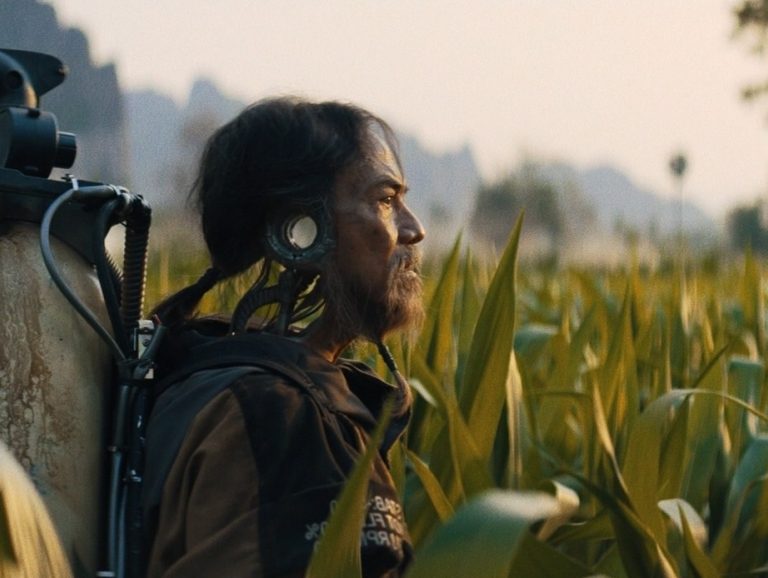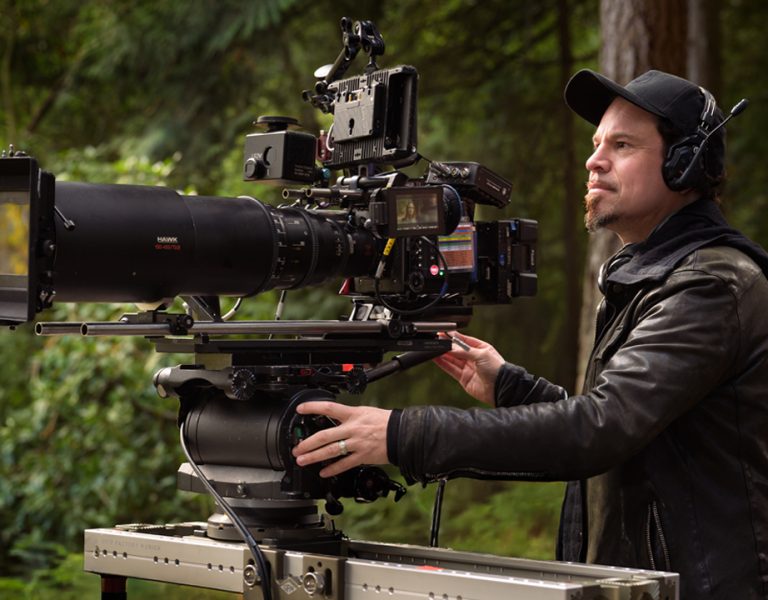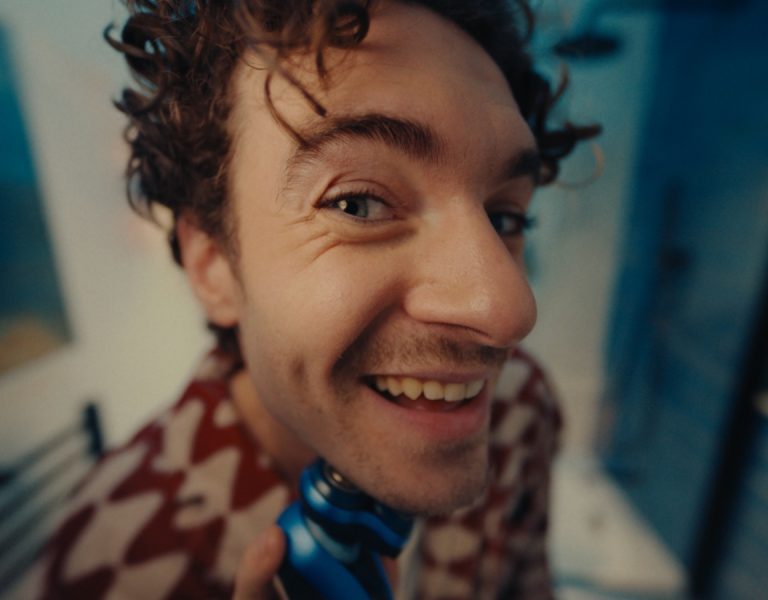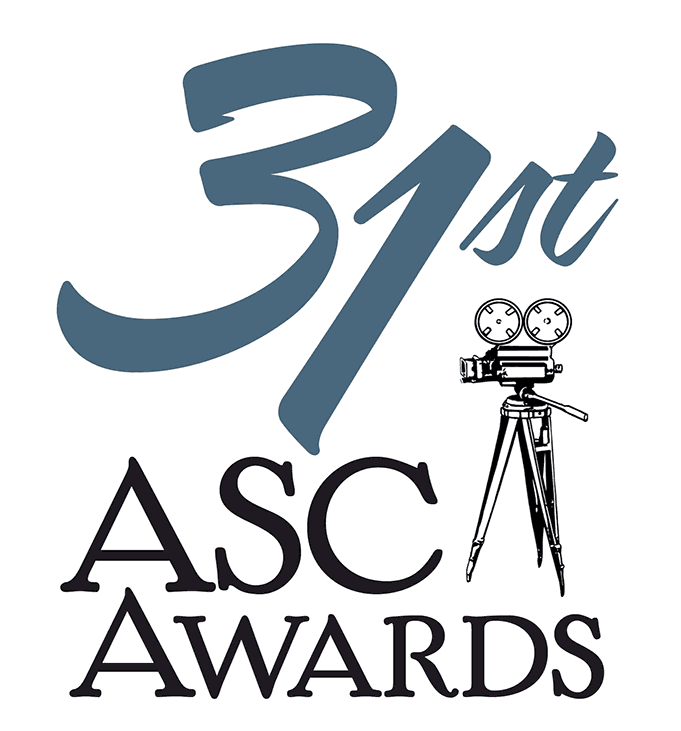My way
Terry Stacey ASC / Elvis & Nixon

My way
Terry Stacey ASC / Elvis & Nixon
BY: Debra Kaufman
The image of President Richard Nixon and rock n’ roll legend Elvis Presley shaking hands in The White House is as iconic as it is incongruous. Elvis & Nixon tells the story behind that image, in the Amazon-produced comedy directed by Liza Johnson (Hateship Loveship, Return ), shot by cinematographer Terry Stacey ASC (Salmon Fishing In The Yemen, 50/50, Adventureland ), and starring Kevin Spacey as Nixon and Michael Shannon as Elvis.
Stacey, a graduate of the University of Manchester, has lived in the US since the early 1980s, originally arriving in New York City as a drummer in a band. He got into the moving image industry by shooting music videos and then went to South America with a Bolex to shoot documentaries. In the mid-1990s, he worked on numerous IFC movies, including Love God (1997), an early digital movie, The Laramie Project (2002) and American Splendour (2003).
Stacey and Johnson were already well-acquainted with each other’s work, and also lived within blocks of one another in Brooklyn’s Fort Greene neighbourhood. They met for coffee and immediately hit it off.
“When you meet a director, you have a list of film references that you hope he or she will connect with,” says Stacey. “We liked movies like All The President’s Men (1976, Gordon Willis ASC) and Midnight Cowboy (1969, Adam Holender) and The Conversation (1974, Bill Butler ASC/Haskell Wexler ASC). We also talked about photography from that era, such as William Eggleston and Gary Winograd.”
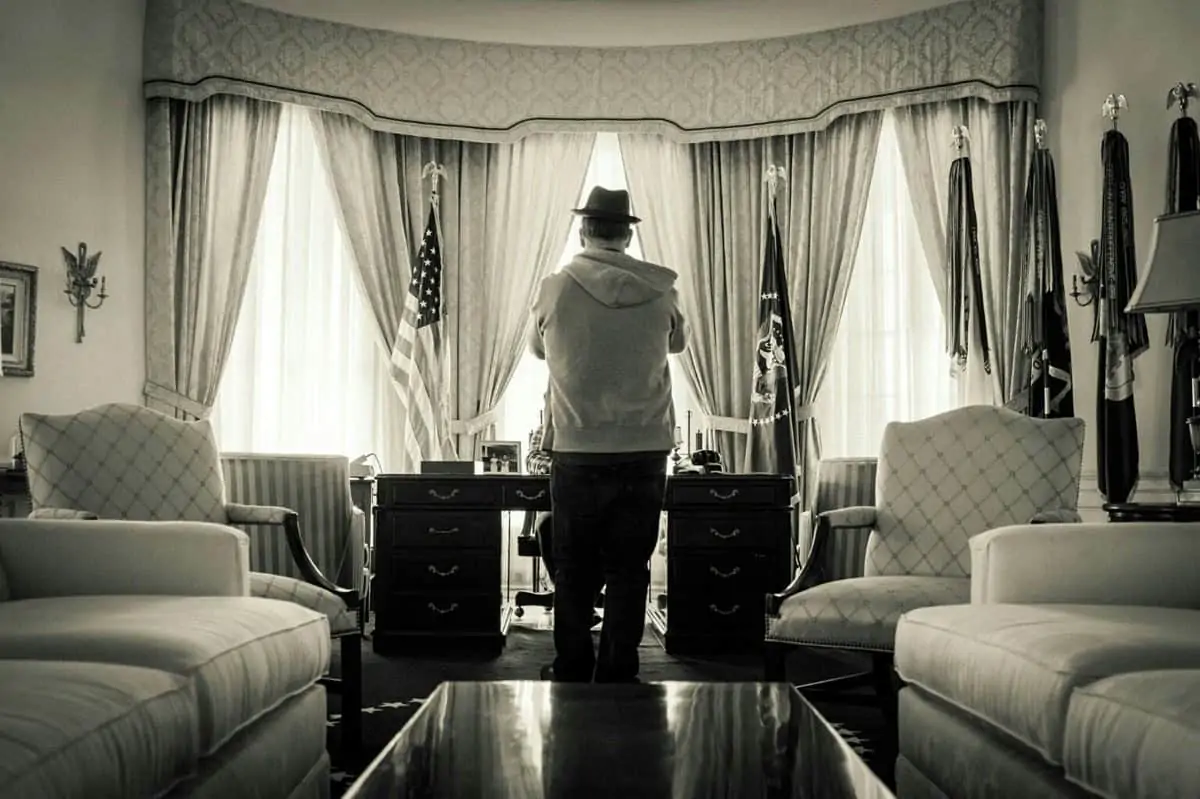
They both quickly agreed that because Elvis & Nixon depicts “an absurd slice of life,” it shouldn’t be stylised. “The form shouldn’t detract from the story,” says Stacey. “It should be naturalistic.”
Referencing The Beat That My Heart Skipped (2005, Stéphane Fontaine), Stacey also wanted the camera to have “kinetic energy,” especially, and “to make sure we held a lot of wide frames and use composition where we could.”
The challenge, as always, was time and money: the movie had a $12 million budget and 24 shooting days, with Spacey only available for a week. New Orleans stands in for 1971 Washington DC; Baruch College stood-in for the White House exterior, whilst White House interior scenes were shot on a stage built in a converted WinDixie supermarket. Other portions, including the White House corridors, were shot in the mayor’s offices in downtown New Orleans. Other locations included a Greyhound bus station that doubles for the Washington DC airport and an old hotel, the Pavilion, with a very ornate bathroom.
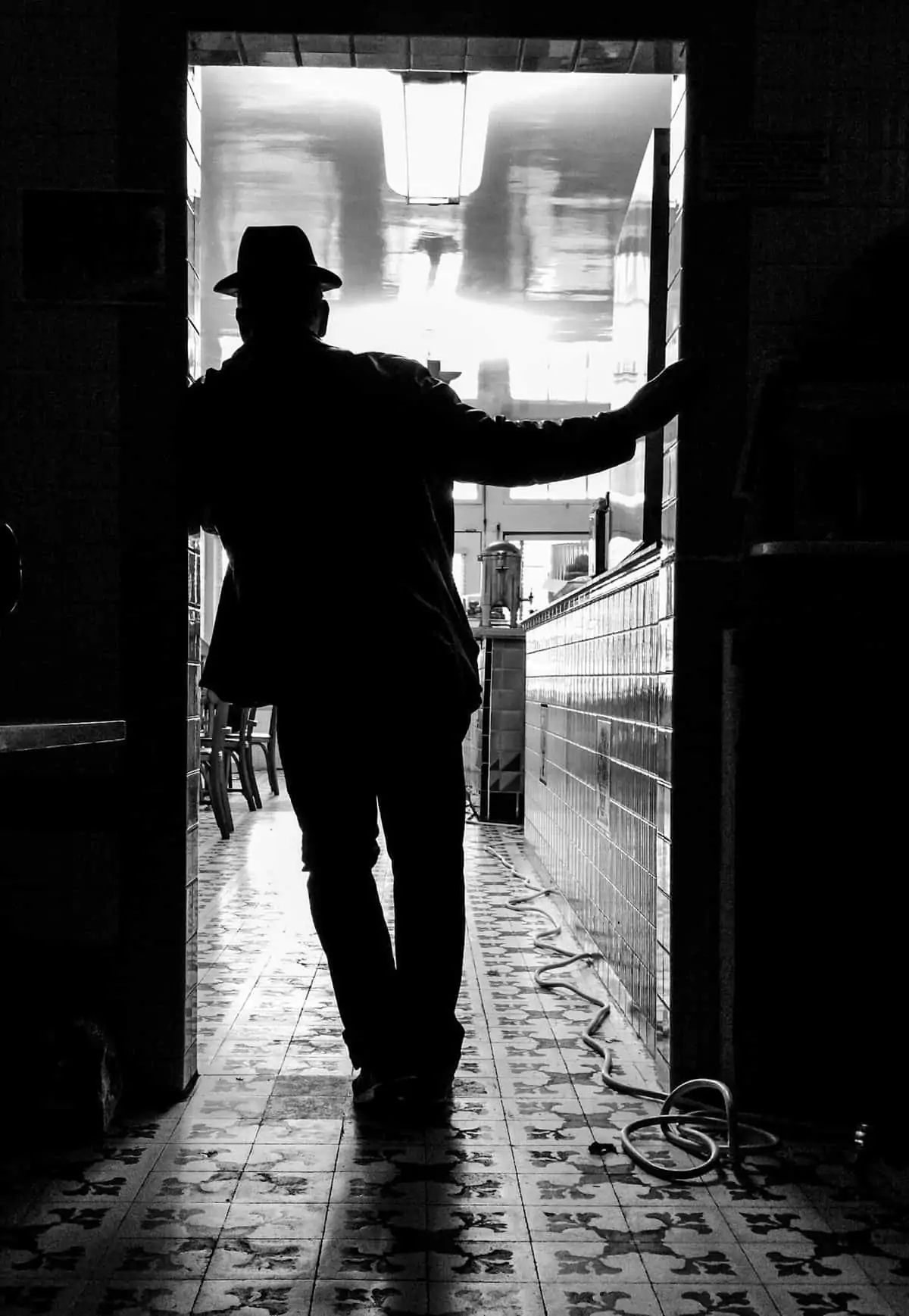
"I love the Alexa and treat it like a film camera. It was ideal for the many low-light conditions, and I was able to pick up these amazing happy accidents. In one scene, we’re following Elvis through the lobby. As the elevator doors closed, you could see his reflection, which I never thought we could get."
- Terry Stacey ASC
Stacey praises the production designer Mara LePere-Schloop for her ability to create a realistic White House, as well as Graceland. “She had a lot of challenges,” says Stacey. “She focussed on keeping things in period. We just had to be creative.” For example, in one scene inside a limo near the airport, they had to put two period cars on either side of it to block out contemporary billboards and buildings.
In the Pavilion Hotel, they shot in rooms on the 17th floor. “We had no control of the light from the windows, but we couldn’t find any hotel room on a lower floor,” says Stacey. “So we sealed all the windows and put in our own light boxes with strips of LEDs. In front of that was a layer of diffusion. You could almost see the strips of LEDs, but on camera, it became this soft white light. We could turn it up 100 percent and it worked as a key light, but when we looked at the windows, we could turn it down and it looked like daylight.”
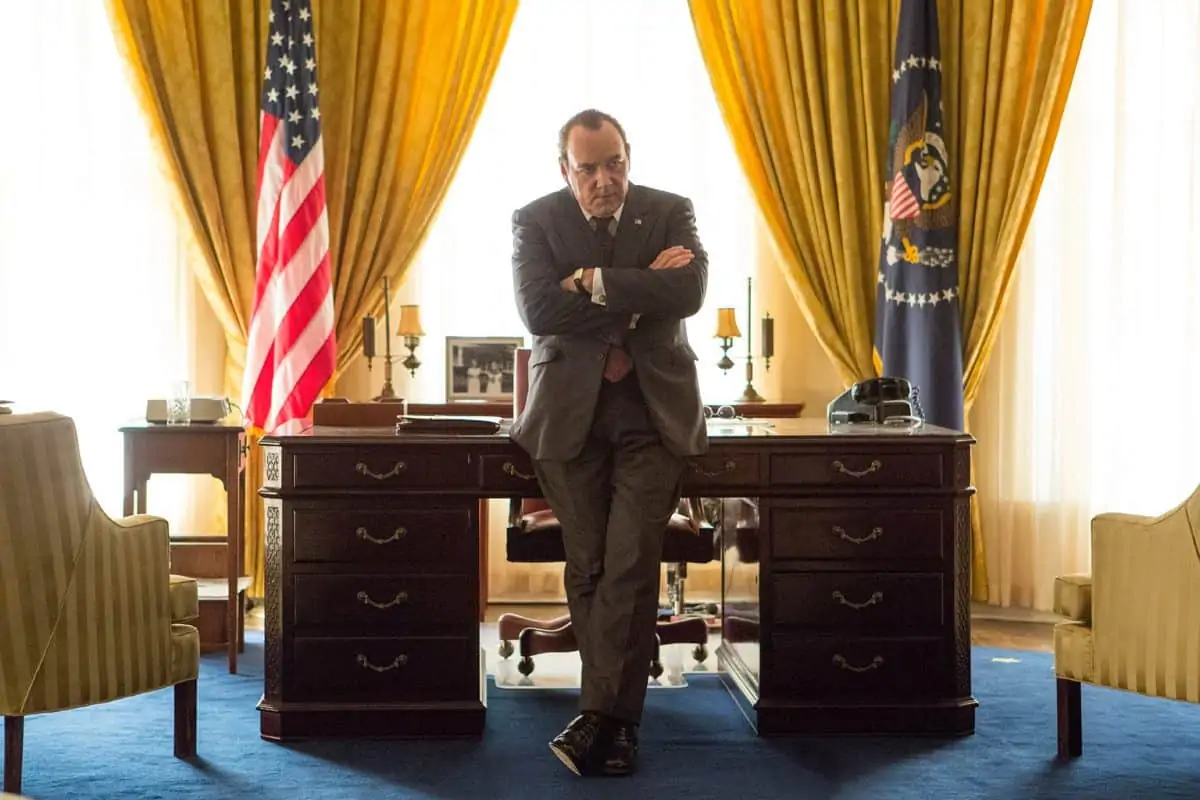
Stacey chose to use the ARRI Alexa for the production, with two cameras used extensively in the Oval Office scenes with Elvis and Nixon. “I love the Alexa and treat it like a film camera,” adds Stacey. “I use my meters and know I have the extreme latitude to play around with later. It was ideal for the many low-light conditions, and I was able to pick up these amazing happy accidents,” he says. “In one scene, we’re following Elvis through the lobby. As the elevator doors closed, you could see his reflection, which I never thought we could get.”
Prior to the shoot, Stacey had done lens tests and decided to use Kowa, older Japanese Anamorphic lenses. “They’re very particular,” he says. “If you point them at the light, they flare easily. The various aberrations and softness gave it the texture that I liked.” For the most part, he says, they used the 50mm and 75mm lenses.
“Oliver Cary was my A-camera operator,” he says. “He could keep up with Elvis, like a parrot on his shoulder. The Anamorphic lenses were great for focusing in on Elvis.”
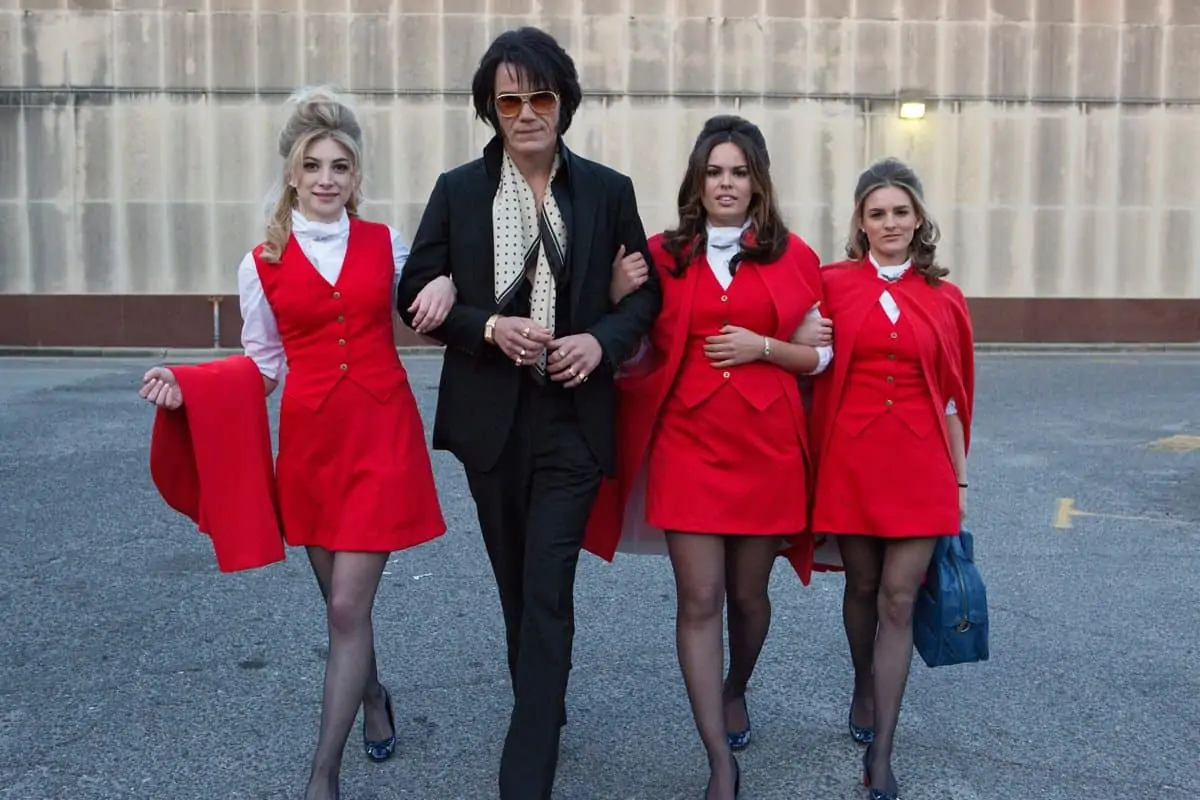
Cross shooting in the White House scenes with Elvis and Nixon was perhaps the biggest challenge. “It could be difficult to get the two lenses to match, and we didn’t have a DIT on-set because of budget,” says Stacey, who also credits gaffer Chip Carey and key grip Eric Damazio.
“My favourite scene in the movie is Elvis in an anteroom before going into the Oval Office,” says Stacey. “He looks in the mirror and has a moment with himself, talking about the death of his brother. It was hard to find a way to light him, until I realised there were these potted plants. We created a down light with these small Dedolights, a very punchy tungsten light that reflected this red colour from the flowers into his glasses. The red gave a disturbing feel, which was great for the scene.”
“That was another one of those happy accidents I love with the Alexa,” he says. “What you see is what you get with digital, and there’s something wonderful about that when you’re on a tight schedule.”


